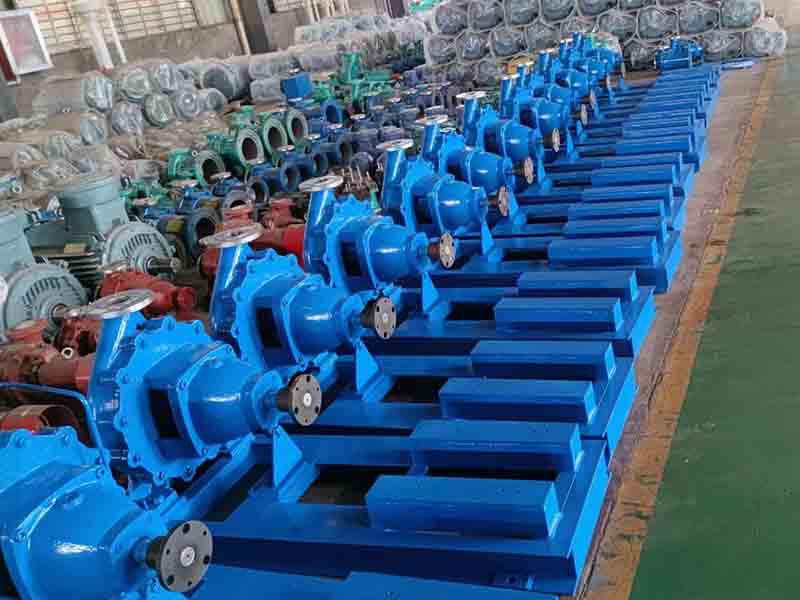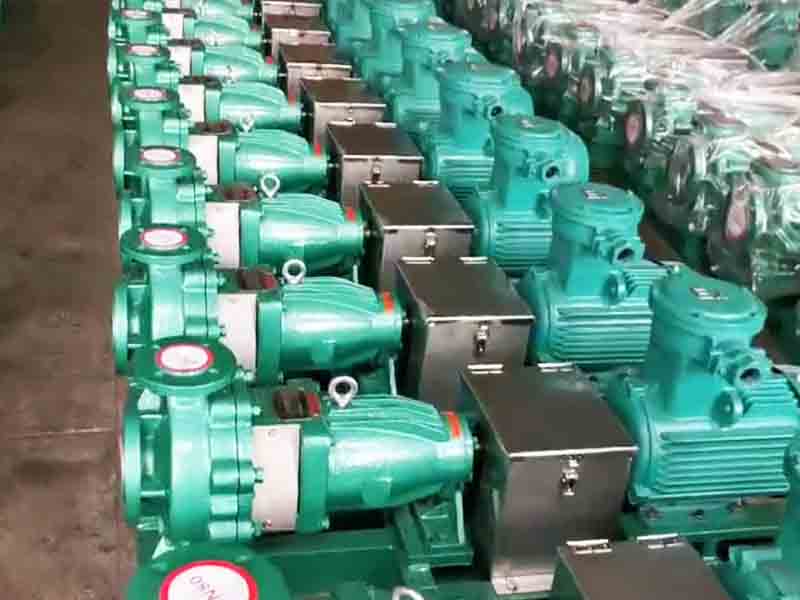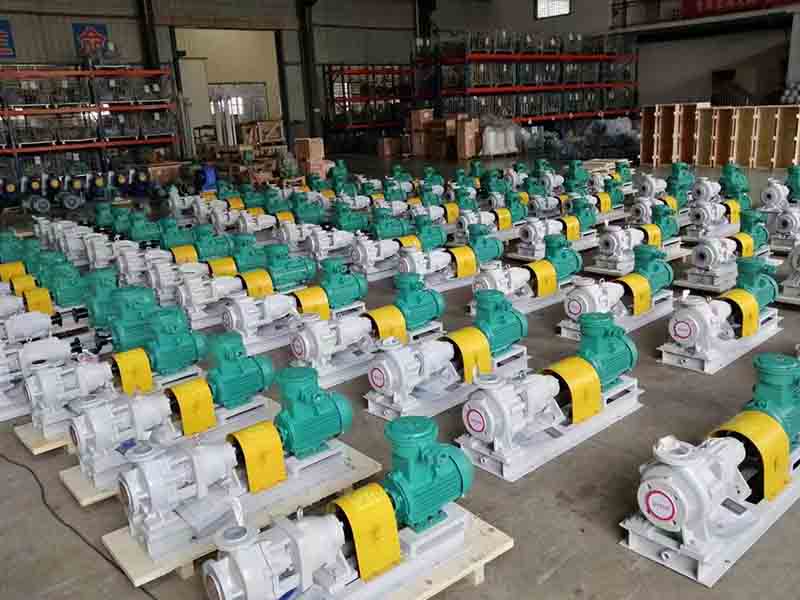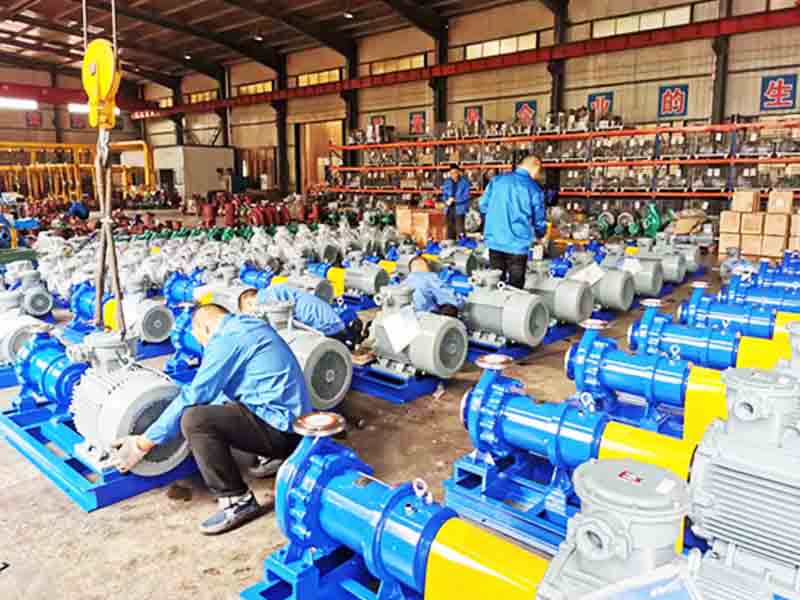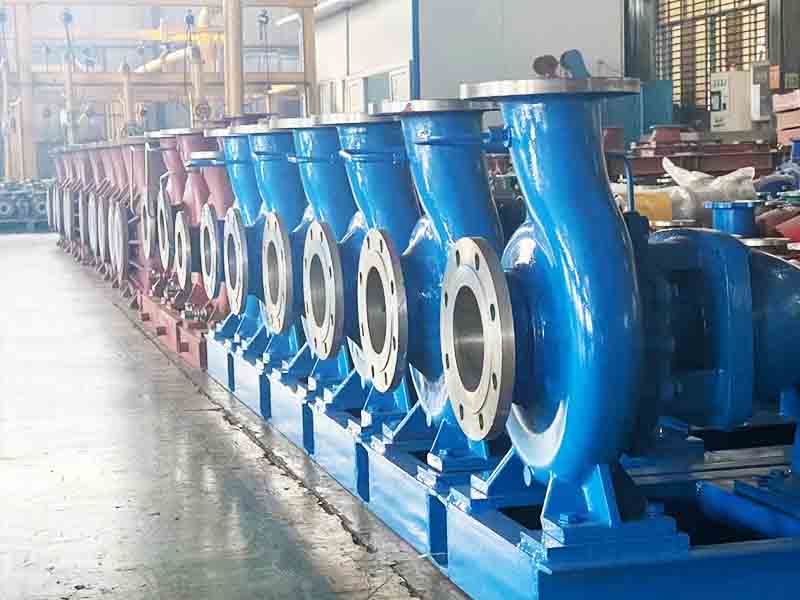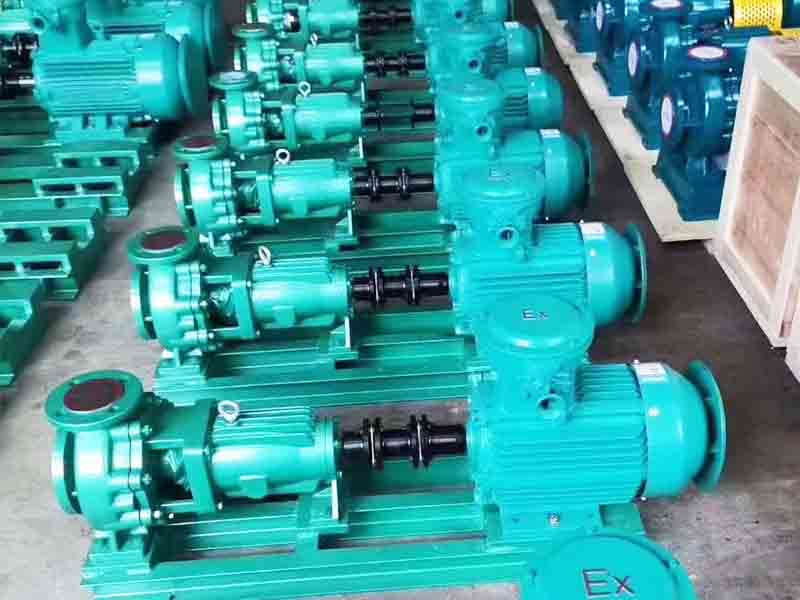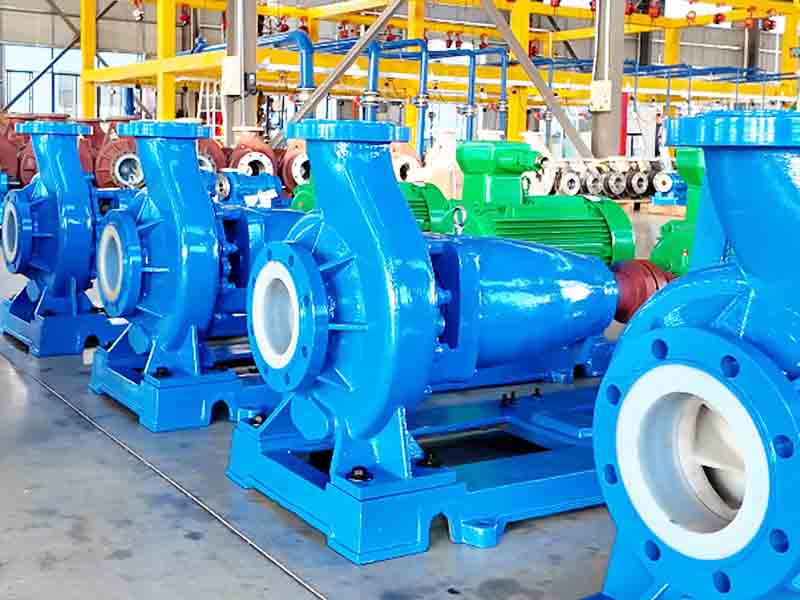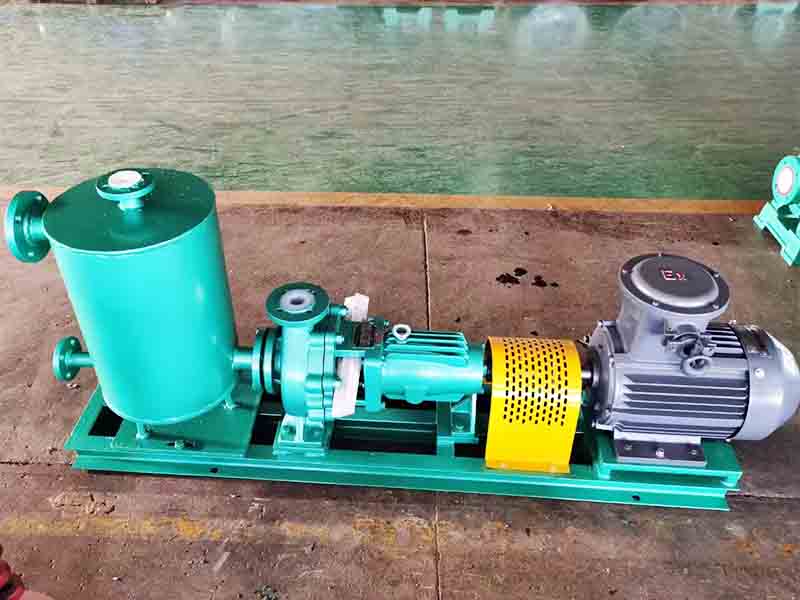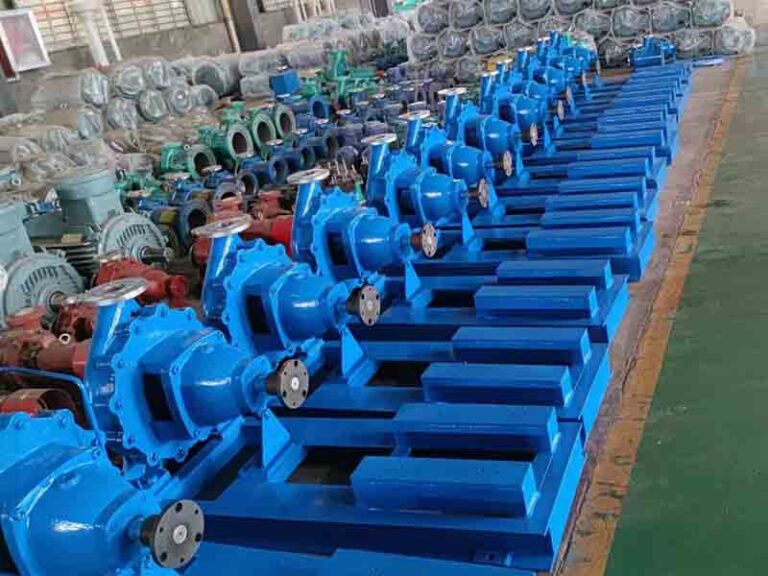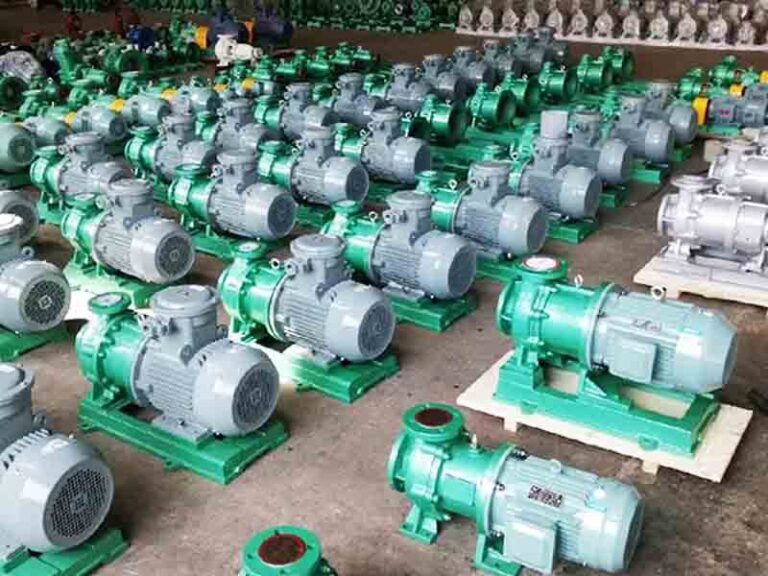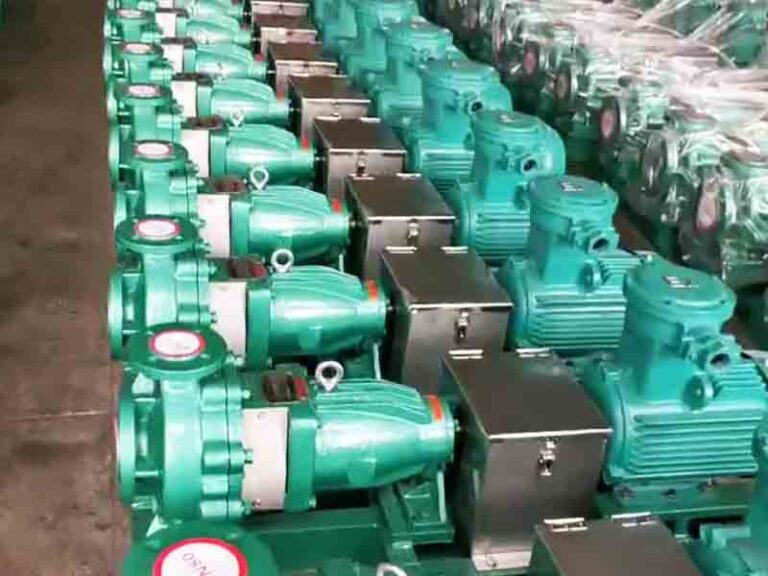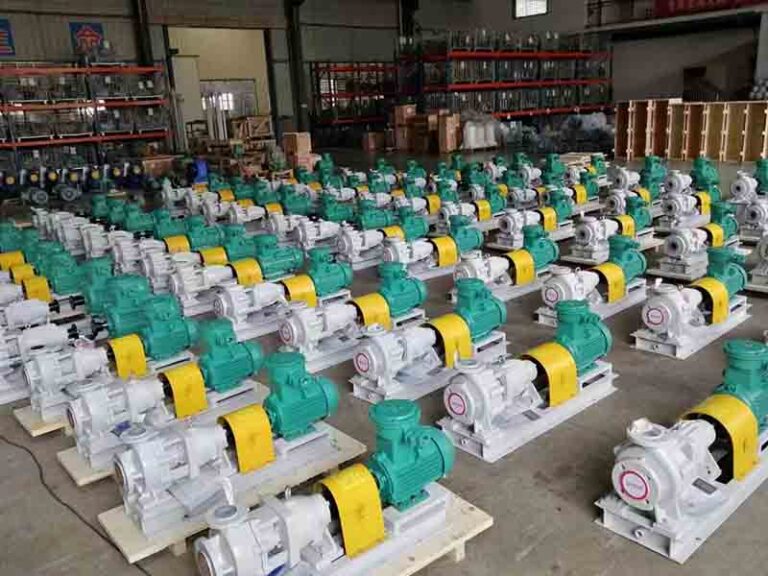Pump alignment plays an extremely critical role in the proper functioning of industrial equipment. Correctly aligned pumps ensure efficient, stable operation and significantly reduce component wear and the risk of failure. So, exactly how to align your pump? Next, let us explore.
What is Pump Alignment
Pump alignment refers to the correction of the centers or shafts of two or more rotating machines to ensure that they operate efficiently and consistently, avoiding unnecessary stress or vibration on components. Although pumps and their drive motors are the main targets for calibration, this operation is also applicable to machinery with rotating parts such as turbines and compressors.
Different Types of Pump Alignment
Shaft Alignment
Shaft alignment is the precise alignment of the pump shaft and motor shaft so that they are aligned along the axis of rotation. Shaft misalignment can take many forms, including offset, angular misalignment, or parallel misalignment, each of which can have adverse effects. For example, offset misalignment can result in uneven forces on bearings and seals and accelerated wear, while angular misalignment can cause increased wear and vibration of coupling components, as well as premature bearing damage.
Coupling Alignment
Couplings are used to connect pump shafts to motor shafts and are required to accommodate small misalignments while transmitting power. Different types of couplings have varying degrees of flexibility and therefore require specific calibration techniques. Rigid couplings, for example, require extremely high shaft concentricity, while flexible couplings compensate for shaft misalignments to a certain extent.
Types of Pump Misalignment
Radial Misalignment
Radial misalignment, also known as offset misalignment, means that the centerlines of the pump shaft and drive shaft are parallel, but not concentric. This misalignment can cause bearings and seals to be subjected to uneven loads, which in turn can lead to premature wear and failure. Typically, improper installation or foundation settlement are common causes of radial misalignment.
Axial Misalignment
Axial misalignment, also called axial runout, is when the pump shaft and drive shaft are concentric, but not parallel. This misalignment occurs when the clearance between the coupling end faces is too large or too small. Axial misalignment creates axial thrust on the bearings, resulting in premature bearing damage and increased vibration.
Angular Misalignment
Angular misalignment occurs when the pump shaft and drive shaft are neither parallel nor concentric, and there is an angle between the two shafts. This misalignment results in uneven wear of coupling components, increased vibration, and premature bearing failure. Causes usually include improper installation, foundation settlement or thermal expansion.
Importance of Proper Pump Installation and Alignment
Reduce Vibration and Noise
Misaligned pumps produce excessive vibration and noise during operation, which not only disrupts the work environment, but in some cases, the vibration can damage the centrifugal pump body. Proper alignment can alleviate these problems and ensure smooth and quiet operation.
Extended Bearing Life
Misaligned pumps can accelerate bearing wear, leading to frequent and costly repairs or replacements. Properly aligned pumps can reduce bearing wear, extending their life and reducing maintenance costs.
Prevent Seal Leakage
Misalignment can easily damage seals and lead to leaks, which not only contaminate process fluids, but can also lead to costly downtime. By properly aligning your pump, you can prevent seal problems and ensure production continuity.
How to Align Shafts
Initial Inspection
A thorough inspection of the pump and motor is essential prior to alignment. Look for signs of wear, improperly installed or damaged parts, and make sure that all components are secure and in good condition, and that bolts are easy to handle and couplings are free of defects.
Rough Alignment Check
If a dual laser alignment tool is being used, a rough alignment using other alignment techniques is required first. This initial step helps to identify obvious misalignment problems and make initial adjustments to bring the shafts closer into alignment, setting the stage for subsequent calibration with precision tools.
Measuring with Precision Tools
Single-laser alignment tools, such as the Prufro RotAlign Touch, for example, can be used without the need for a rough alignment. Single-laser calibration systems can accurately measure misalignment by providing data in both the horizontal and vertical planes. However, when using a laser calibration tool, accurate measurements need to be entered, and smart tools like RotAlign can guide the user through this process.
Making Adjustments
Based on accurate measurements and taking into account thermal expansion, adjustments are made to the position of the drive (usually the motor). This may involve addressing soft foot issues and moving the device horizontally or vertically. In general, it is best to address vertical alignment before horizontal alignment. A quality laser alignment tool will provide real-time movement data, and vertical alignment can be achieved by adding or removing shims under the feet of the device, and by tightening or loosening bolts to achieve the desired alignment.
Final Verification
Once adjustments have been made, measurements are taken again to ensure that the alignment is within the manufacturer’s recommended tolerances. Repeatable results are essential to confirm the success of the calibration process and, if necessary, adjustments are repeated until the desired calibration is achieved.
Benefits of Pump Alignment
Optimize Operational Efficiency
Proper alignment minimizes energy loss and ensures that pumps run at peak efficiency, reducing power consumption and operating costs. A magnetic pump that is aligned delivers fluids more smoothly and wastes less energy.
Extended Equipment Life
Proper alignment reduces mechanical stress on shafts, bearings and seals, extending the life of these components and therefore the life of the entire equipment. Reducing the number of part replacements increases equipment reliability.
Improved System Reliability
With aligned pumps, the probability of mechanical failures, unplanned downtime and safety hazards is significantly reduced, resulting in more reliable and stable system operation. This helps to safeguard production continuity and increase productivity.
Reduced Noise and Vibration
Correct alignment dramatically reduces the level of vibration and noise generated by equipment, creating a safer working environment. Employees are more comfortable working in an environment with less noise and vibration, which also reduces health problems caused by noise and vibration.
Common Issues Associated with Pump Misalignment
Premature Component Failure
When a pump is misaligned, bearings, mechanical seals, couplings and shafts are subjected to additional stresses, and the increased load accelerates wear and fatigue, leading to premature failure of these critical components. For example, bearings can wear and spall in a short period of time and mechanical seals are prone to leakage.
Excessive Vibration and Noise
Misaligned pumps operate with significantly higher levels of vibration compared to properly aligned pumps. Force imbalances within the pump and large movements of components create strong vibrations that are felt and heard throughout the system. This not only affects the normal operation of the equipment, but can also cause disturbance to the surrounding environment.
Increased Power Consumption And Reduced Efficiency
In order to continue operating in an unaligned condition, the pump requires more input power to overcome the additional friction and resistance. However, much of this extra energy is wasted as heat and not really used for efficient pumping. This results in lower pump efficiency and higher energy consumption.
Excessive Leakage Of Mechanical Seals And Gaskets
Pump misalignment prevents the mechanical seal from maintaining good contact, resulting in uneven sealing surfaces and increased leakage. Gaskets can also become deformed due to unbalanced forces, and over time, sealing performance deteriorates and the tight seal is gradually lost.
Increased Maintenance Requirements and Costs
Because misaligned pumps are more prone to failure, they require more frequent repairs and parts replacement. Both planned and unplanned maintenance tasks must be performed more frequently to keep the pump running properly, which undoubtedly increases maintenance costs.
Pump Casing Rupture And High Circumferential Fatigue
Severe misalignments can put the pump casing under extreme stress, leading to cracking or even complete rupture. Excessive vibration and unbalanced forces may also cause the pump impeller to strike the pump casing, gradually causing damage. This not only affects the performance of the pump, but may also lead to equipment scrap.
Pipe Forces And Base Plate Displacement
The forces generated by an unaligned pump are transferred directly to the connected piping. If the stress exceeds the pipe’s pressure rating and material strength, the pipe may bend, deform or even rupture. At the same time, misalignment can also cause the pump assembly to displace on the base plate, changing the support points and distribution of forces and affecting the stability of the equipment.
Common Causes of Misalignment in Pumps
Incorrect Installation
Failure to follow the manufacturer’s instructions during pump installation can lead to misalignment. This can cause uneven load distribution, accelerated component wear, and ultimately premature component failure. For example, the concentricity of the shafts is not adjusted properly during installation, or the bolts are not tightened with the same torque.
Bearing Wear
Over time, bearings naturally wear out, which can lead to shaft misalignment, which in turn triggers misalignment. Especially under high loads and prolonged operation, bearing wear accelerates and misalignment problems are more likely to occur.
Soft Foot Condition
When the motor feet are not placed flat (often referred to as a “soft foot” condition), this can cause vibration, which can lead to pump misalignment. In addition, improperly installed piping, external shocks, vibration, and thermal changes can cause pump misalignment over the life of the pump’s operation.
How To Check Pump Misalignment
The following is what can happen when the shaft is not aligned to help check if the pump is aligned.
Vibration Increased
A significant increase in vibration when equipment is running, especially at high speeds, is a common phenomenon of pump misalignment. Misalignment leads to the generation of non-monetary forces and moments, which trigger mechanical vibration. For example, when the motor is rotating at high speed, the overall shaking of the equipment can be clearly felt.
Noise Increased
Abnormal noises, such as knocking, rubbing or humming, occur when the equipment is in operation. This is because misalignment causes abnormal contact and friction between parts, resulting in noise. When the equipment is running, abnormal sounds different from normal operation can be heard.
Bearing Overheating
The temperature of the bearing rises abnormally and may even burn out. Misalignment increases the load and friction on the bearings, leading to heat buildup, which in turn causes the bearings to overheat. By touching the bearing area or using a temperature measuring instrument, the bearing temperature can be found to be significantly higher than the normal range.
Wear Of Seals
Wear of seals such as oil seals accelerates and leakage occurs. Misalignment causes seals to be subjected to uneven pressure and friction, which accelerates their wear. If liquid leakage is found in the sealing area during the operation of the equipment, it is likely that the seals have been damaged due to misalignment.
Coupling Damage
The coupling is cracked, worn or broken. Misalignment increases stress and wear on the coupling, which is susceptible to damage under prolonged action. Inspection of the coupling reveals visible signs of cracks or wear on its surface.
Shaft And Bearing Wear
Shaft and bearing surfaces show wear, scoring or pitting. Misalignment causes abnormal contact and friction between the shaft and bearing, accelerating wear. When shafts and bearings are inspected, signs of wear can be seen on their surfaces.
Decline In Equipment Efficiency
Equipment operating efficiency decreases significantly and energy consumption increases. Misalignment increases mechanical losses and reduces the efficiency of energy transfer. By comparing the energy consumption and efficiency data during normal operation, it can be seen that energy consumption rises and output efficiency decreases when the equipment is misaligned.
Shortened Equipment Life
The overall life of the equipment is shortened and frequent failures occur. Misalignment accelerates equipment aging by subjecting components to additional stress and wear. The frequency of malfunctions increases significantly during the use of the equipment, and the service life is much lower than expected.
Loose Foundation Bolts
Loose or broken equipment foundation bolts. Misalignment leads to increased vibration of the equipment, which in turn causes foundation bolts to loosen. Regular inspections of equipment foundation bolts reveal that some of the bolts are loose.
Shaft Breakage
The shaft is cracked or broken. Misalignment can subject the bearings to additional bending and fatigue stresses, eventually leading to breakage. When equipment is found to be not functioning properly, an inspection of the shaft may reveal that the shaft has broken.
Gear Wear
The gears in a transmission show abnormal wear, pitting, or broken teeth. Misalignment can cause gears to mesh poorly, increasing wear and stress. When inspecting the gears in the transmission, you can see signs of abnormal wear on the surface of the gears.
Pump Performance Degrades
The flow and pressure of the pump drops and efficiency decreases. Misalignment can lead to abnormal contact and friction between the internal parts of the pump, affecting its performance. By measuring the pump’s flow rate, pressure and other parameters, it can be found that its performance indicators are below the normal range.
How Do You Fix Misalignment in a Pump
Loosening the Motor
The first step in fixing a pump misalignment is to loosen the bolts on the motor bracket in order to make adjustments to the motor position. Only by loosening the bolts will the motor be able to move, setting the stage for subsequent alignment operations.
Adjusting the Position
Adjust the motor position according to the misalignment measurement. This may include side-to-side movement in the horizontal direction, forward and backward movement, or changing the height by adding or removing shims under the motor base. Adjustments should be made gradually to bring the motor to the correct position based on accurate measurement data.
Retighten and Recheck
Once the adjustment is complete, retighten the bolts on the motor mount and recheck the calibration using the selected tool. This procedure ensures that the calibration is accurate and prevents calibration failures due to loose bolts or improper position adjustment.
Fine Adjustment
For minor adjustments, the motor position can be fine-tuned using jackscrews or similar tools. When close to the ideal calibration state, fine adjustments can be made to make the motor position more accurate and meet the calibration requirements.
Verifying Calibration
When the calibration is within acceptable limits, a final check is made to ensure that all components are properly aligned and securely fastened. This step is critical to the success of the calibration and only after final verification can the pump be confirmed to be calibrated to the correct condition.
Conclusion
Pump alignment is critical to the efficient and stable operation of industrial equipment. Understanding the importance, types, methods, and issues associated with pump alignment can help operators better maintain and manage pump equipment. Regular pump alignment checks and proper maintenance are key to ensuring optimal equipment performance and long-term reliability. We hope that this article will provide you with useful reference and guidance in pump alignment.


